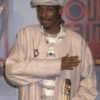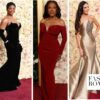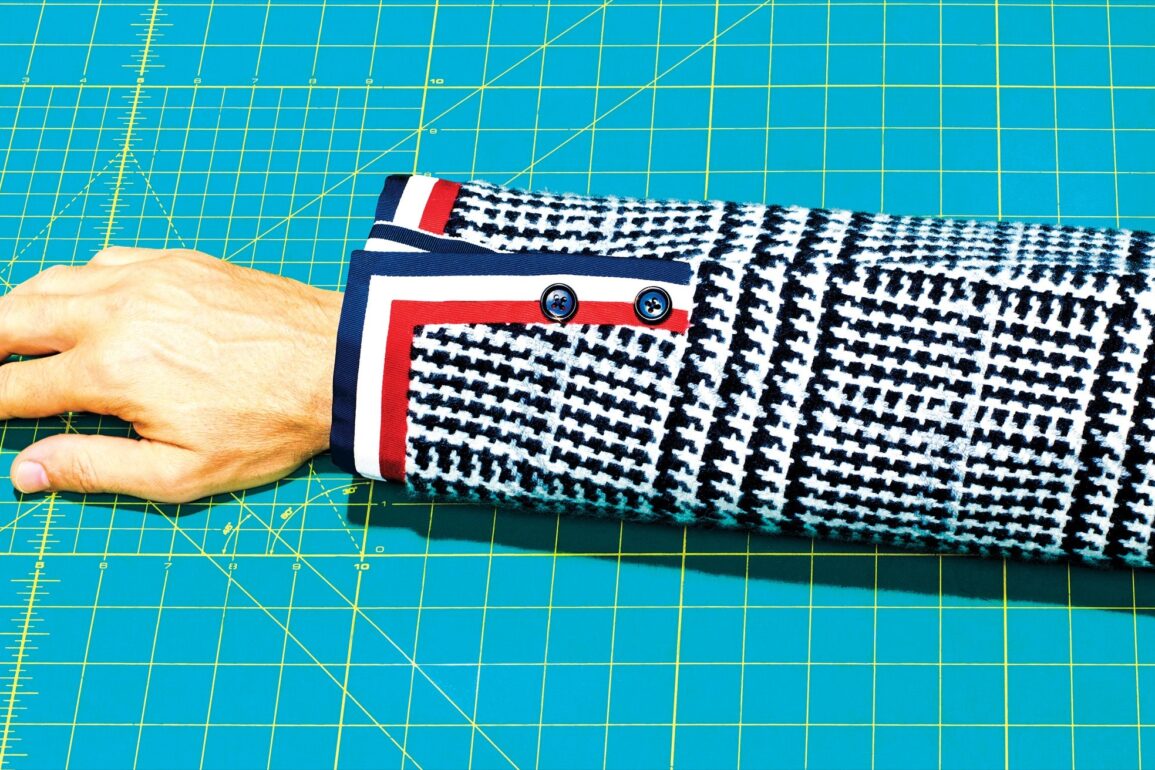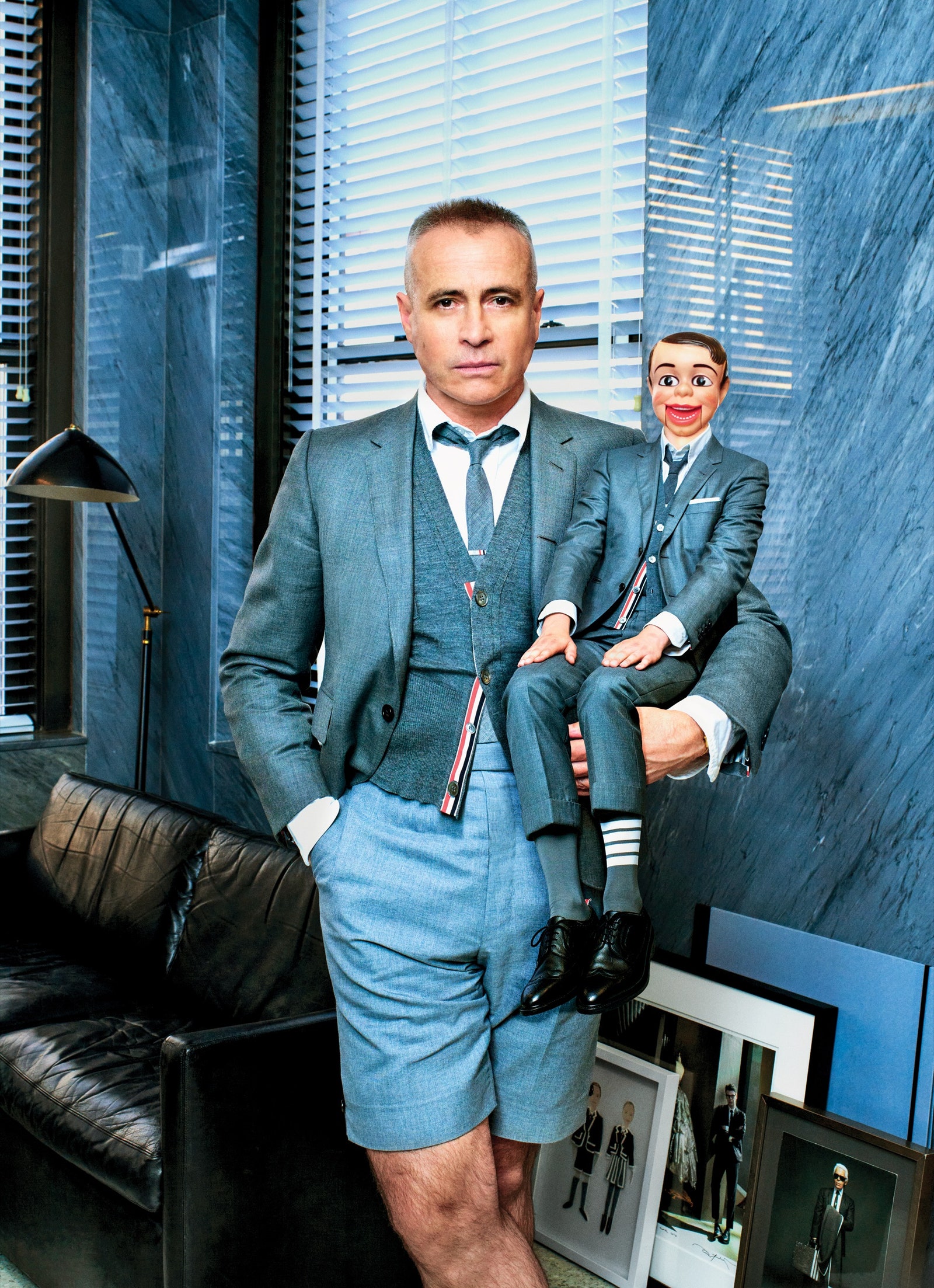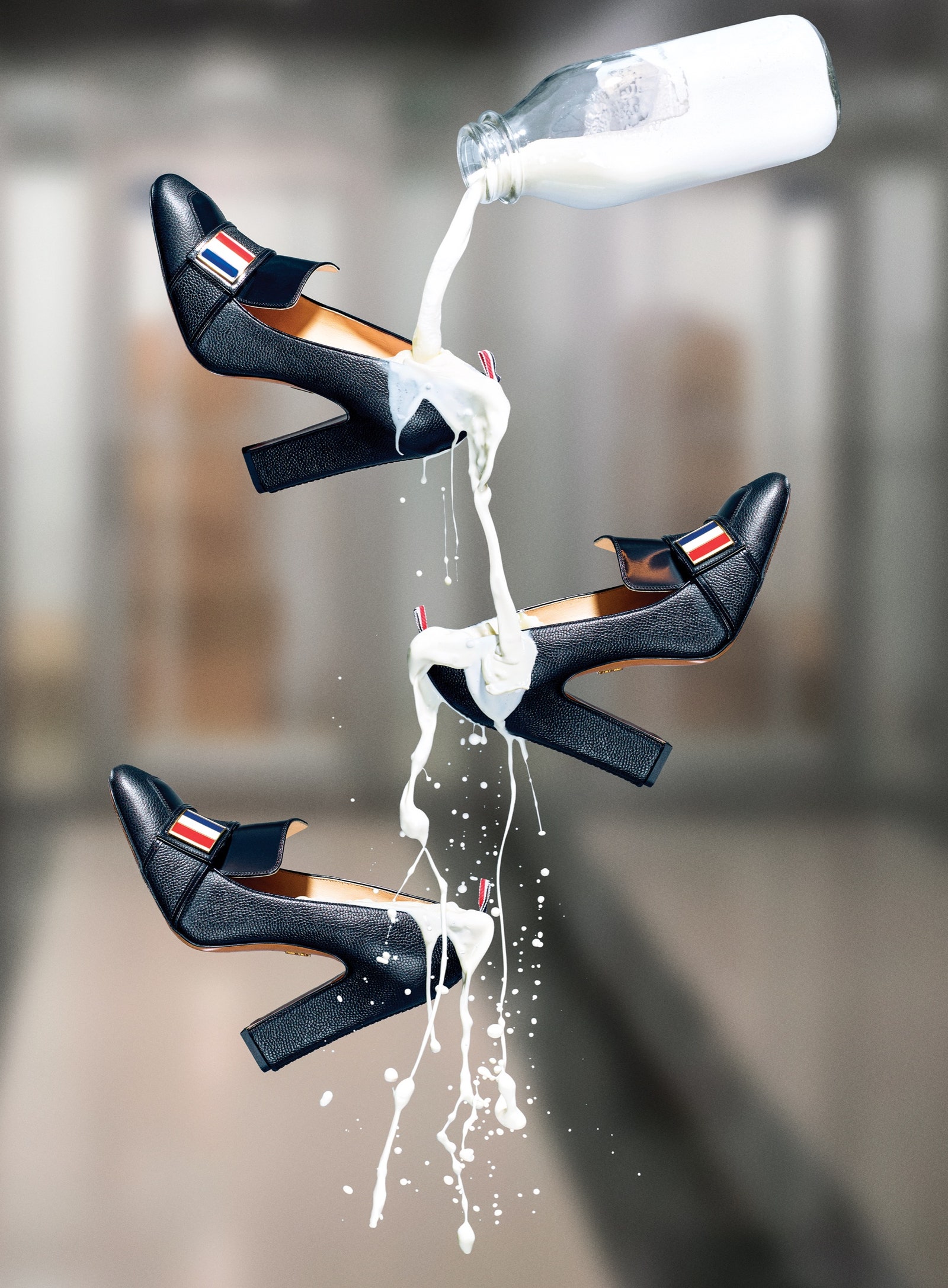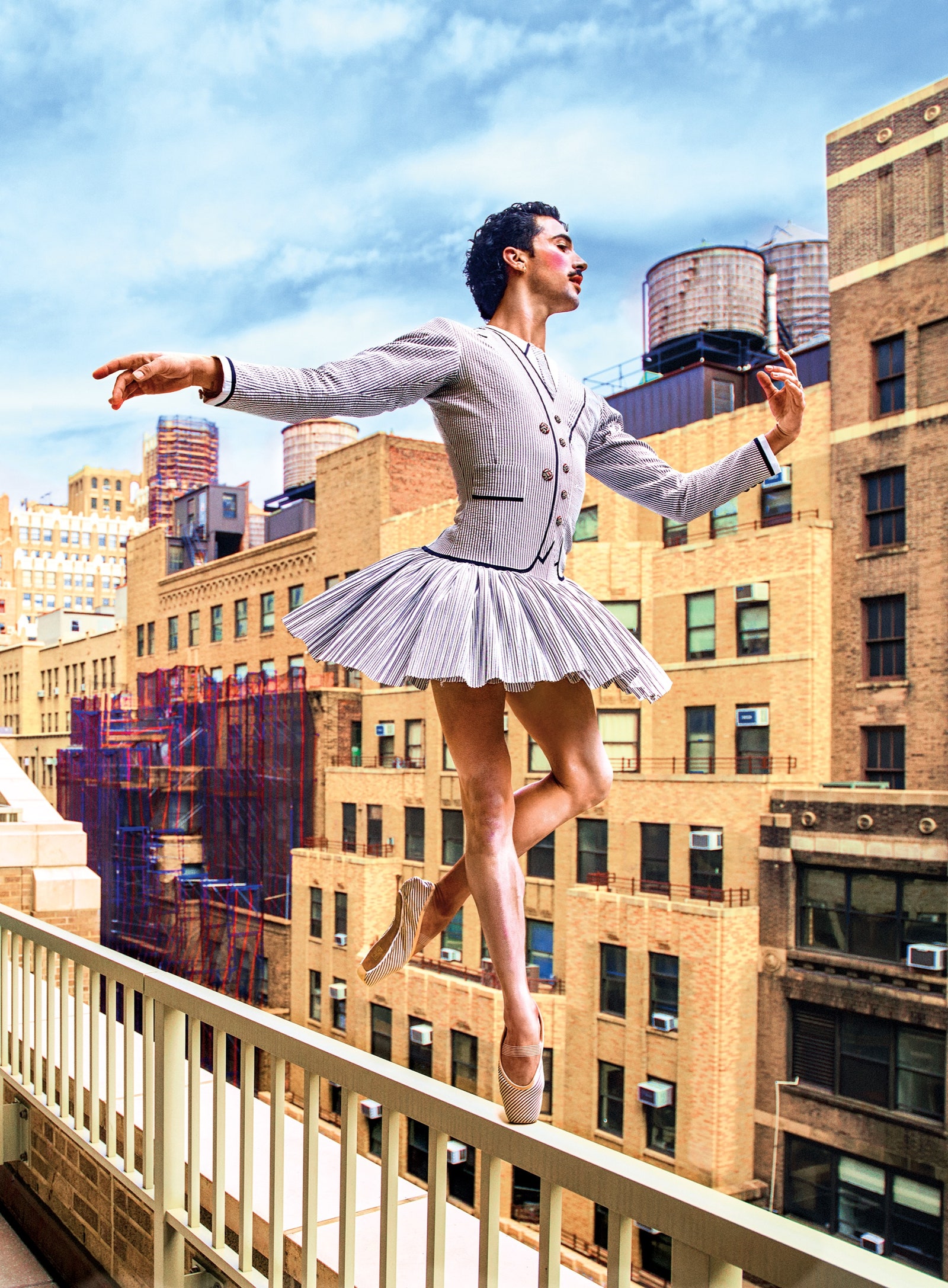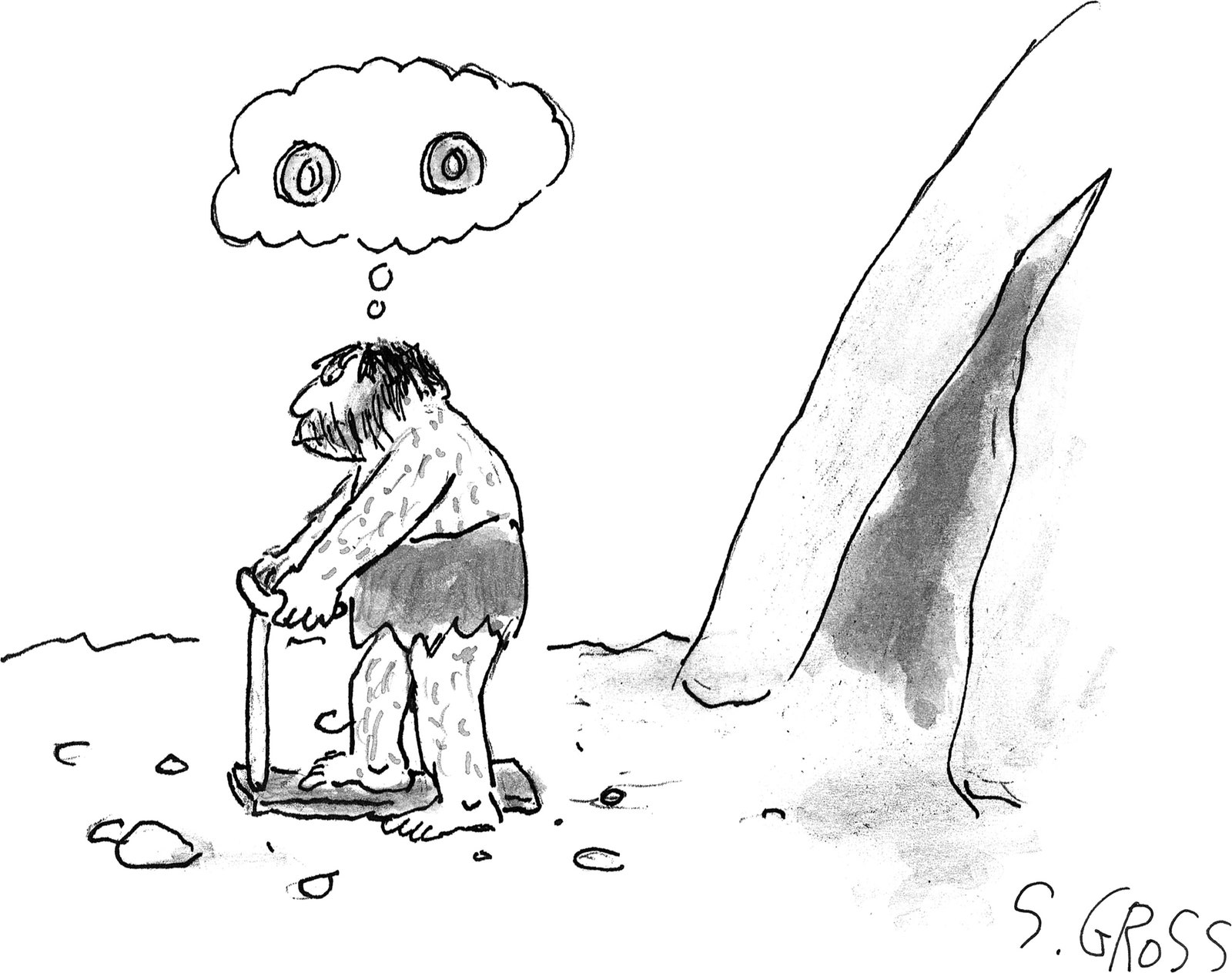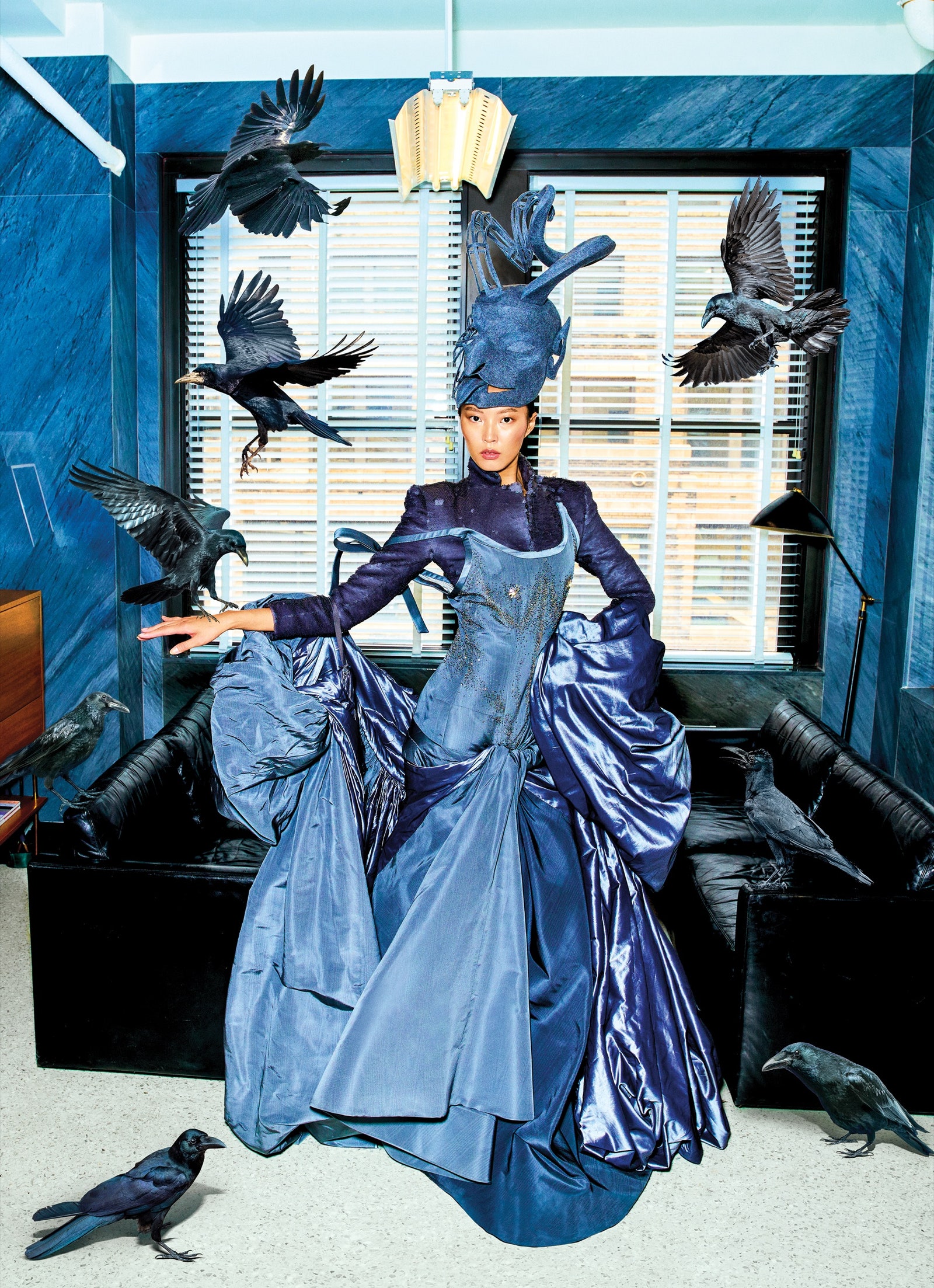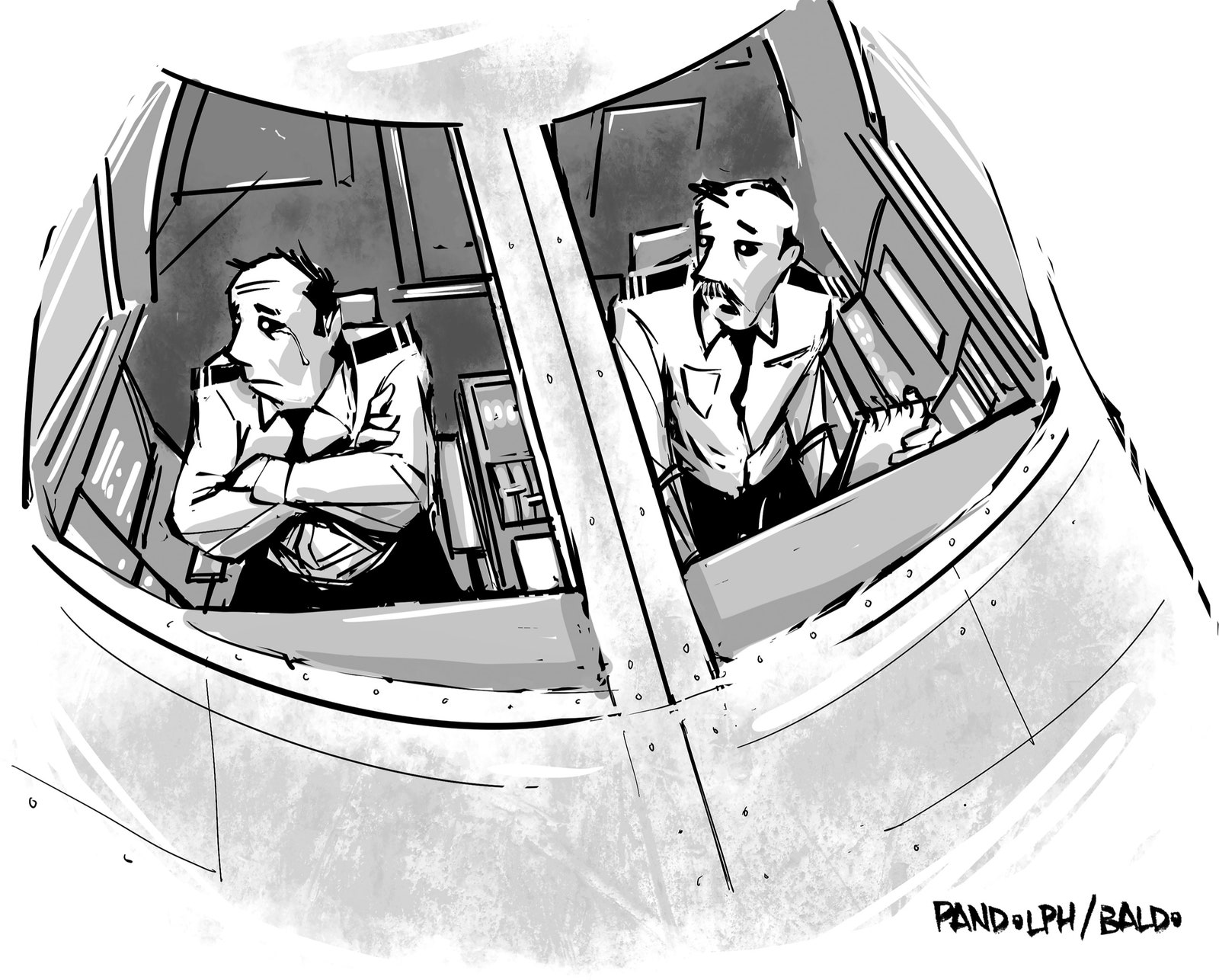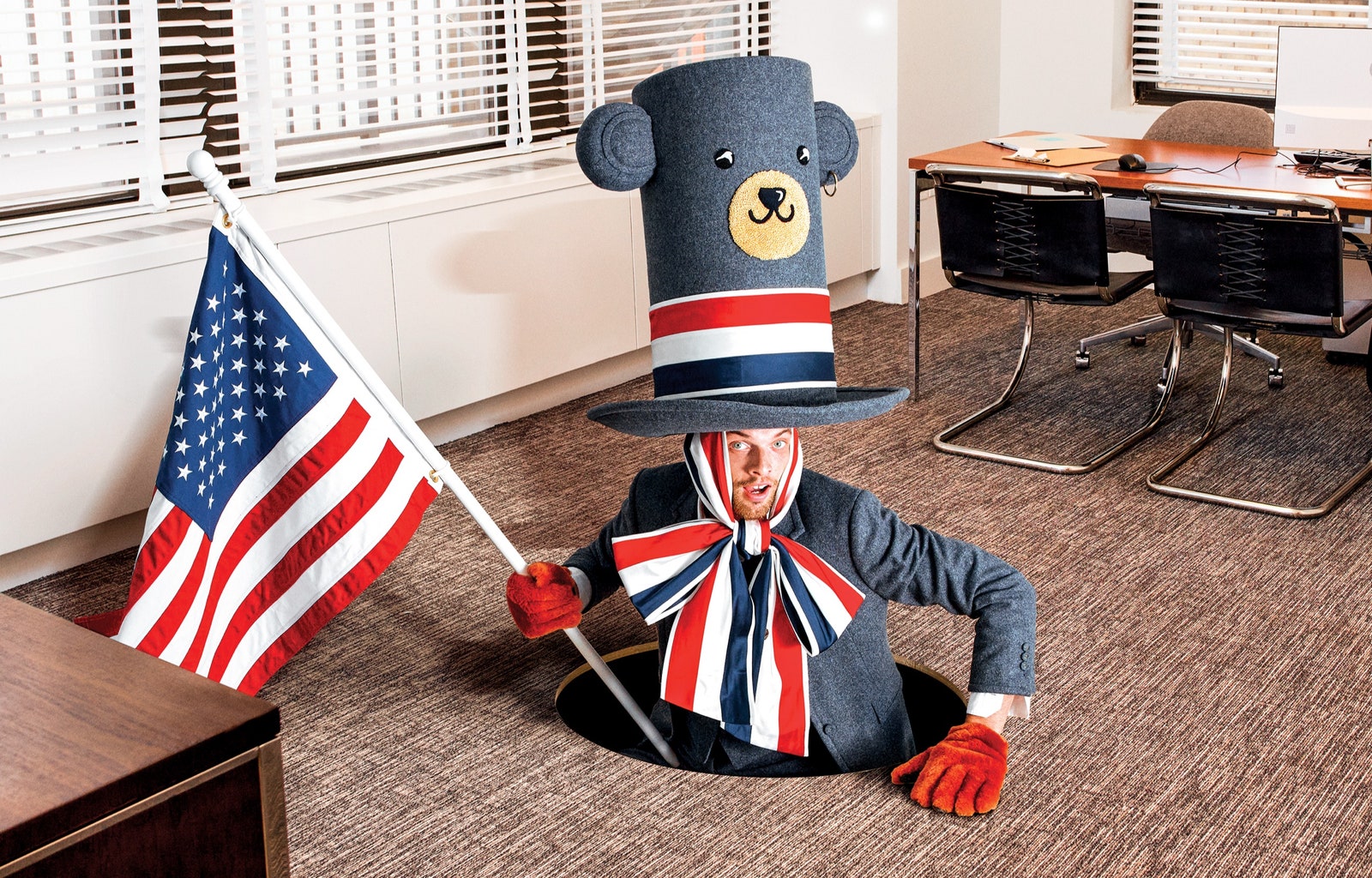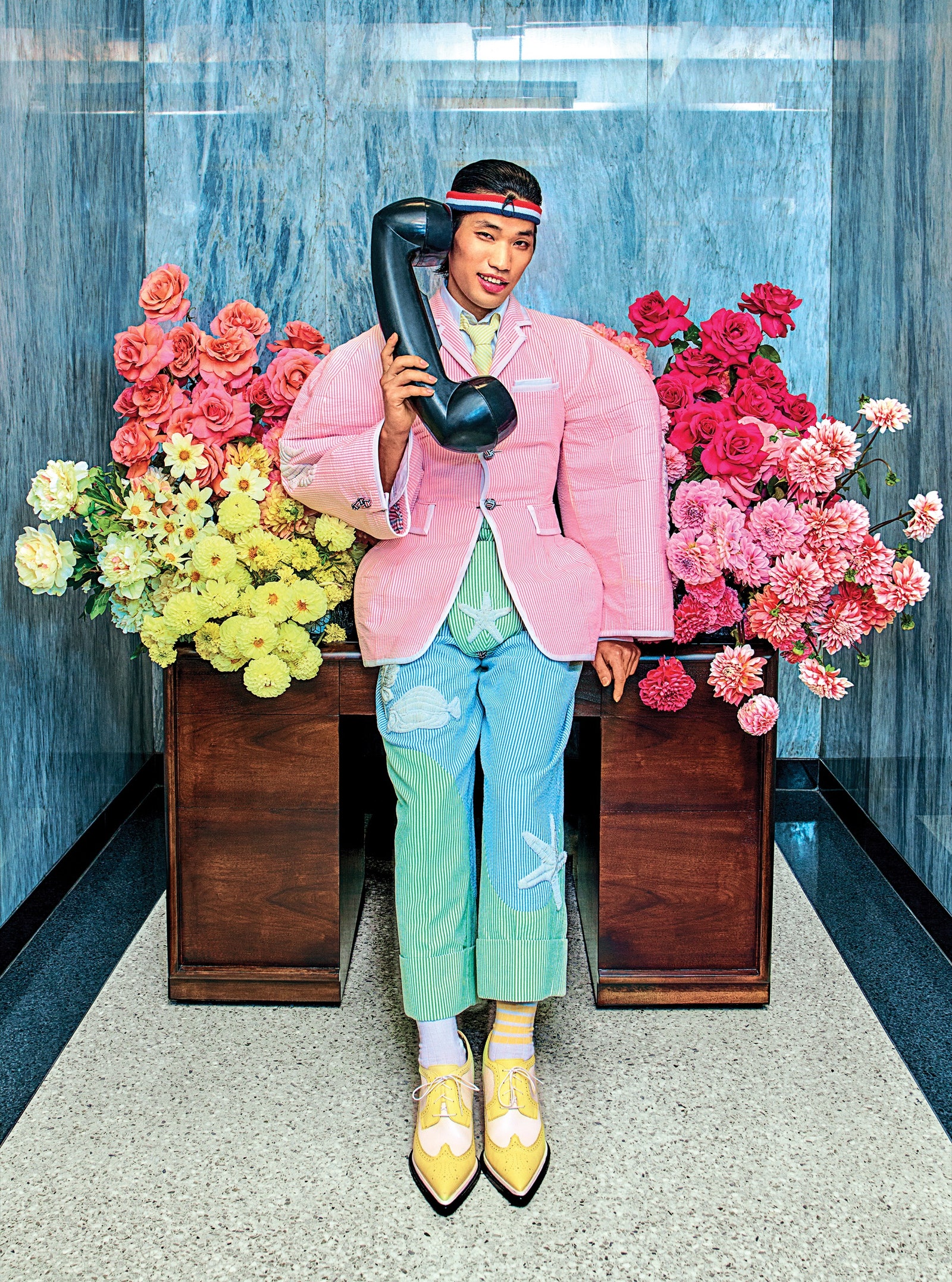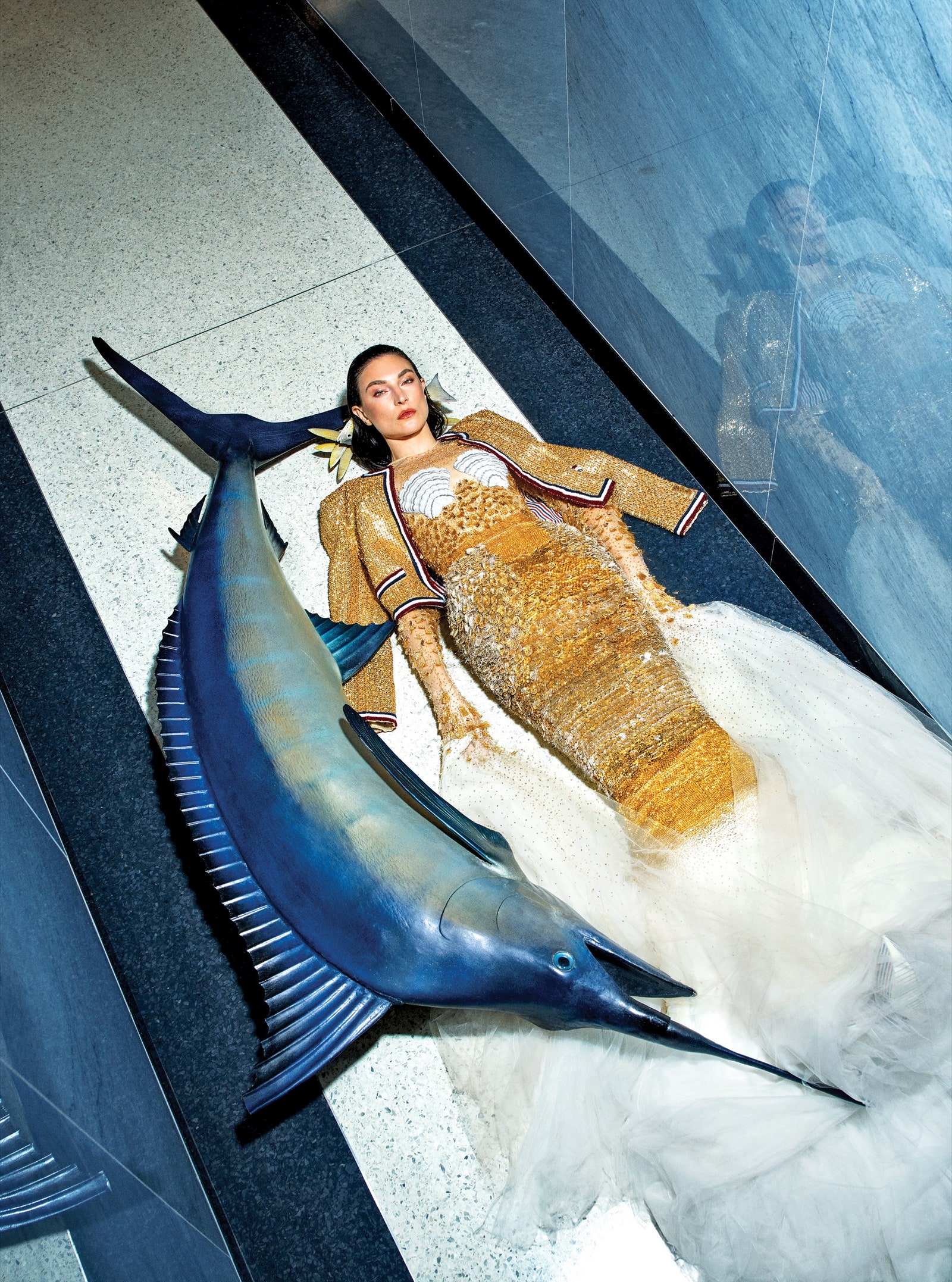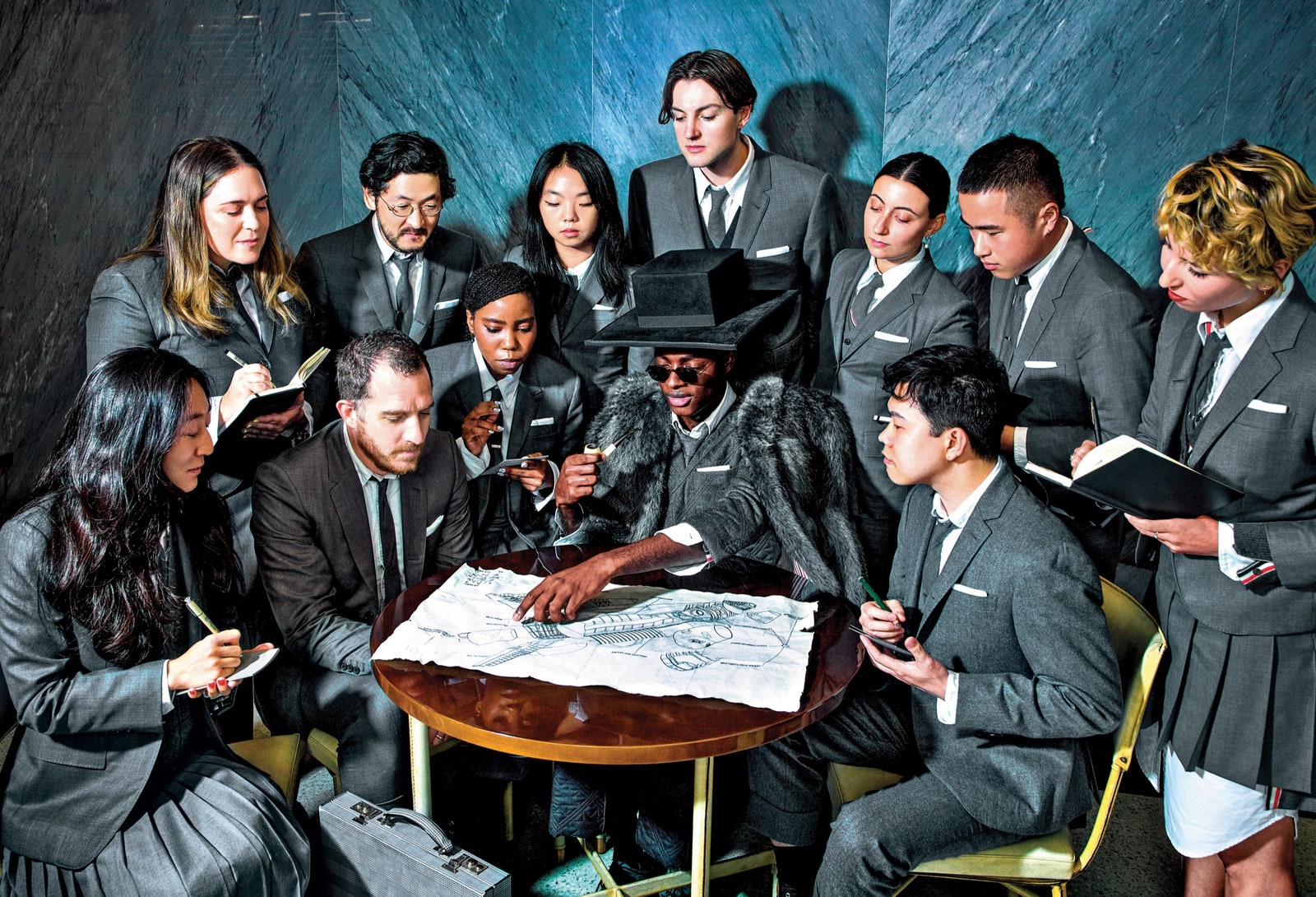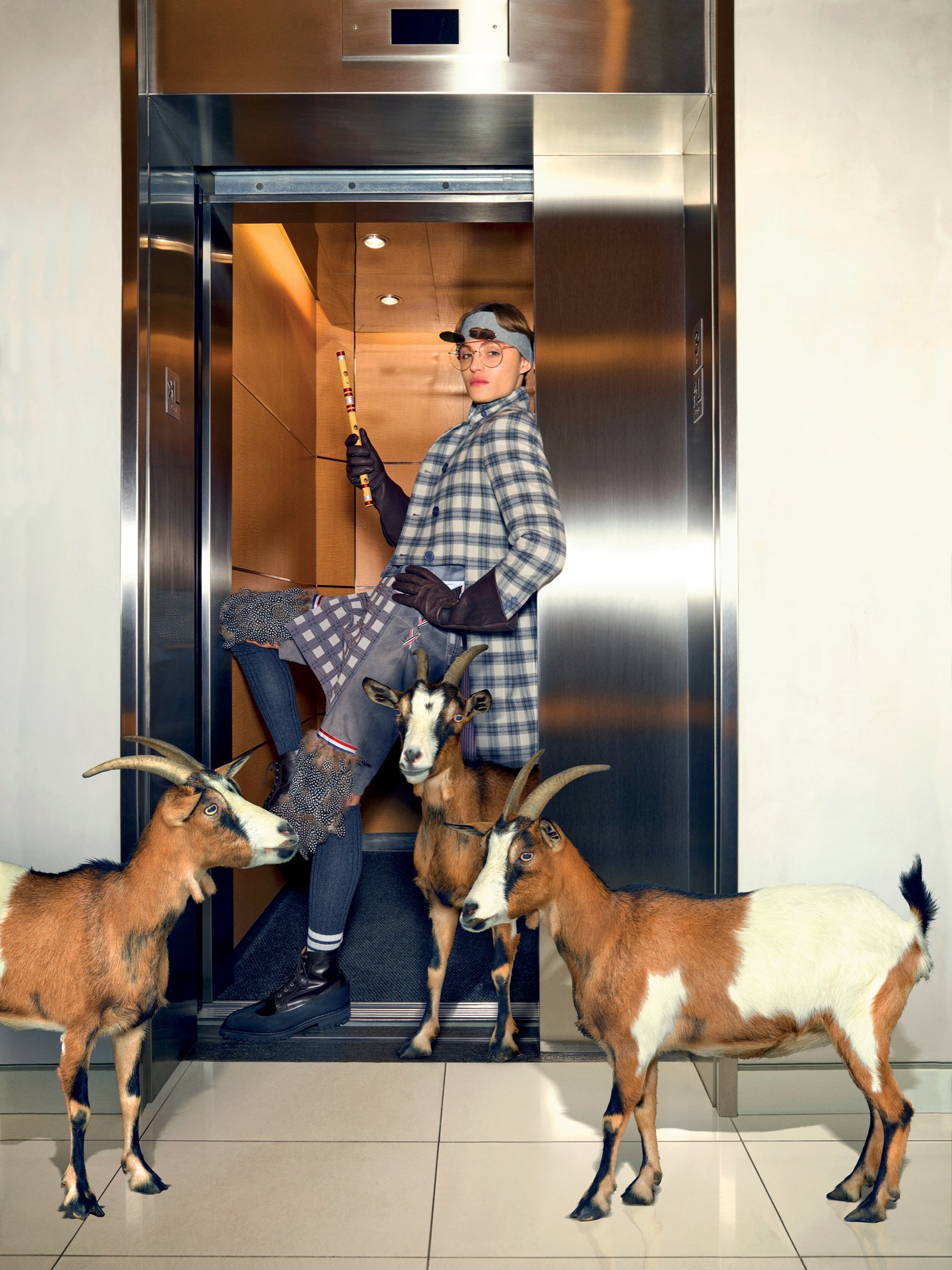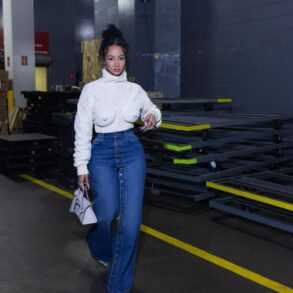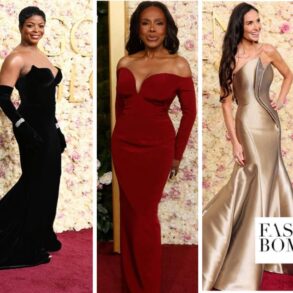How Thom Browne’s Gray Suit Conquered American Fashion
Every new employee of the American fashion designer Thom Browne receives a “starter kit” of his brand’s clothing worth some ten thousand dollars retail, including, among other items, two gray suits, five white oxford shirts, one gray wool tie, and one white pocket square. An eleven-page PDF lays out, through visual aids and bullet points, the rules for how to wear what Browne refers to as “uniform” (never “the uniform” or “a uniform”). Top buttons must remain undone. Shirts are not to be ironed. Neckties, a required accessory, should be tucked tightly into waistbands. Suit pants may be swapped out for a pleated skirt, regardless of one’s gender; Browne, a proponent of androgynous dressing, has been putting men in skirts for more than a decade. Exceptions to the rules are doled out cautiously: the color navy is permitted Friday through Sunday but discouraged during the week; seersucker can be worn in the summer months, and white sneakers only on weekends.
One afternoon in early July, I went to Avenue Montaigne, a luxury shopping promenade in Paris’s Eighth Arrondissement, to visit Browne’s French headquarters. In two days, Browne would, for the first time, present a runway show as part of Haute Couture Week. He was one of only a handful of American designers in the past fifty years to be invited to participate alongside such storied couture houses as Fendi, Chanel, and Schiaparelli. But the timing for a high-fashion pageant suddenly felt off. A few days earlier, a policeman had shot and killed an unarmed teen-ager of Algerian descent during a traffic stop in the Paris suburbs, sparking protests across the country. I had flown in on a red-eye expecting to find a city on edge. Yet on Avenue Montaigne the mood was serene. Pedestrians sauntered along a row of European flagship boutiques nestled in battlements of creamy limestone: Gucci, YSL, Prada, Louis Vuitton. At No. 30, Christian Dior occupied the same site where, more than seventy-five years ago, the designer unveiled his nipped-waist New Look silhouette. Browne’s shop, at No. 17, is unmarked and open by appointment only, and when I saw the building, a blocky beige office tower that stood out from the elegant architecture like a bucktooth, I wondered if I was in the right place.
Then I spotted an unmistakable trio of Browne employees, smoking cigarettes on the corner. One wore a suit paired with high-top lace-up brogues. Another was in seersucker shorts and a matching cinched waistcoat. The third had on a cropped cashmere vest over a sleeveless oxford shirt. The outfits were all variations on the archetypal Thom Browne ensemble: a “shrunken” gray suit with jacket sleeves that end above the wrists, lapels as thin and sharp as paring knives, and pant legs that are cut some three inches above the ankle, revealing what Browne likes to call “male cleavage.” (His preferred fabric is Super 120’s wool twill in “medium gray,” a color that typically evokes the banal—pencil lead, gravel, wet cement.) The Thom Browne look has often been compared to Pee-wee Herman’s archly nerdy costume or to Don Draper’s office wear after a few rounds through the dryer, but it calls to my mind, too, some mischievous scamp out of a Roald Dahl book who is always conspiring to put a dead hamster in the headmistress’s bed.
Browne, who is fifty-seven and launched his namesake ready-to-wear business twenty years ago, is hardly the first fashion designer to implement a dress code among employees—for decades, the Belgian designer Martin Margiela has required staff to wear long white coats, or blouses blanches, at all times—nor is he the first to take a schematic approach to dressing his customers. Chanel’s little black dress was, as Vogue put it in 1926, a “uniform for all women of taste.” But, in an industry known for chasing novelty, Browne has built one of the most influential brands by iterating on a single idea. His deceptively humble goal is, as he regularly tells his staff, “to make the gray suit look interesting.” Once a menswear cult label, Thom Browne has in recent years become favored among celebrities who wish to signal that they’re game for fashion risk-taking. In 2018—the same year the Italian textile juggernaut Zegna bought a majority stake in the brand, at a valuation of five hundred million dollars—LeBron James, a longtime fan, bought his Cleveland Cavaliers teammates matching Thom Browne suits to wear to playoff games. (The fashion critic Alexander Fury told me that Browne suits hold a special appeal among “big fucking straight men” who like the look of muscles bulging out of fine tailoring.) Browne has put the actor Oscar Isaac in a pleated skirt and the actress Christine Baranski in a corseted tuxedo. The members of boygenius, the queer-feminist supergroup, are currently channelling the early Beatles in custom Browne suits on their world tour. The musician Janelle Monáe, who identifies as nonbinary, attended this year’s Met Gala in a Tim Burtonesque Thom Browne overcoat of black-and-white tweed that peeled off to reveal a giant sheer hoopskirt. Monáe told me, “In Thom’s clothes I feel part of a species of people who are pushing culture forward.”
For the couture show, Browne had rented the Palais Garnier, the city’s grand nineteenth-century opera house. His team had shipped the collection from New York in refrigerator boxes. On Avenue Montaigne, preparations were taking place in a temporary atelier two floors above Browne’s permanent showroom. Fifty employees sat hunched over high tables covered in white cloth, furiously making final adjustments. Some were embellishing a blazer with hundreds of sequins no bigger than a freckle. Others worked on a long overcoat of dove-gray wool interlaced with rows of silver beads, mimicking the undulating texture of silk moiré. Across a hallway, in a makeshift photo studio and fitting room, a photographer was shooting a male model in a shale-colored “bell” gown. One of a dozen such looks in the collection, it had exaggerated mutton sleeves and a conical skirt; a three-piece suit was inlaid down the center of the garment, giving the impression of one outfit skin-grafted onto another. Every now and then, a muffled tinkling sounded from one corner, where Anna Scott, Browne’s head of footwear, futzed with pairs of stilettos that featured brass bells on the heels.
Whatever individuality the uniformed staffers transmitted emerged in small personal flourishes—a streak of pink hair, a glimpse of a leg tattoo—the way a Catholic schoolgirl might radiate cool by adding safety pins to her pinafore. I’d worn shades of black and cream for my visit, but amid employees in uniform any color that wasn’t gray seemed as obtrusive as flaming red. The British master milliner Stephen Jones, who makes headpieces for Browne’s shows, noticed my baseball cap and asked, politely, if he might rid it of a smudge. Then he whisked it into another room to rub the brim down with a wet cloth.
Browne was standing in the middle of the fitting room, leaning against a marble table. He greeted me with a quick kiss on either cheek. Even in these surroundings, he stood out for the punctiliousness of his getup. He has a strong, square jaw and keeps his hair, now salt-and-pepper, in a tidy crewcut. He was wearing a tight sweater vest over his standard wrinkled oxford (“When everything is so well made, I think you need something that kind of throws it off a little bit so it’s not so precious,” he said of the wrinkles); on his muscular legs were snug wool shorts and a pair of Thom Browne knee socks. Browne’s own approach to uniform is unvarying. A former swimmer, he runs eight miles a day; until a knee injury forced him to use a treadmill, he was known to jog around the Central Park reservoir in tailored shorts and a cashmere cardigan. Five years ago, he stopped wearing long pants altogether. He recalled that places like the Ritz in Paris and the Four Seasons in Milan used to give him a hard time for wearing shorts to dinner. “Now,” he said, “they always let me in.”
Browne’s runway presentations are known for their narrative sophistication, but his references, he told me, are often “more Bugs Bunny than Proust.” His settings are pulled from children’s fables—an old-fashioned schoolhouse, an ice-skating rink, a pine forest filled with fake snow—often with a discomfiting twist. For his “Toy Story” collection, last year, he filled a room at the Jacob K. Javits Convention Center with five hundred Steiff Teddy bears outfitted in his suits. A native of Allentown, Pennsylvania, Browne went to Catholic school until the seventh grade and served as an altar boy, and he has framed more than one collection around the theme of nuns and priests. For a show in 2012, he had his models emerge from coffins while a narrator told the audience that “they died for fashion.” Johnson Hartig, one of Browne’s oldest friends and the founder of the fashion label Libertine, told me that although there is “something draconian and a little dystopian” about Browne’s creative vision, “it’s all done in a tongue-in-cheek, innocent kind of way.”
For the couture show, Browne had found inspiration in the opening lyrics of the song “Fade to Grey,” by the British New Wave band Visage: “One man on a lonely platform.” He described the show’s protagonist, to be played by the Sudanese British supermodel Alek Wek, as “a girl who comes into a train station wearing a classic gray suit who is not so happy with her life.” The rest of the collection featured outfits representing various characters that the woman encounters on the railway platform, including luggage porters, gargoyles, a conductor, and a pair of high-fashion pigeons.
One of the couture birds, played by a male model named Florian DesBiendras, wobbled in from the atelier in full costume, which included six-inch, heel-less cantilever shoes. Browne craned his neck. “God, you’re so tall,” he said, giggling.
For more than a decade, Browne has been in a relationship with Andrew Bolton, the head curator at the Metropolitan Museum’s Costume Institute. When Browne was first developing the new collection, Bolton shared with him a time-honored rule of couture: garments should “look heavy and feel light.” The pigeon outfit consisted of a fitted turtleneck minidress made of a paillette fabric developed for Browne in Switzerland, and covered with hundreds of hand-tipped gray, green, and purple feathers. In a witty touch, a hand-felted skirt made to resemble a suit jacket was draped around the hips, with exaggerated shoulder pads that doubled as panniers.
Browne asked DesBiendras, a trained dancer, to practice “walking like a bird.” DesBiendras, who also had on a googly-eyed avian headpiece designed by Jones, began to strut around the room and flap his arms as if to mimic a dying swan. Joining in, Browne put his hands behind his back and wiggled his fingers like tail feathers.
Later, Browne went over the show’s soundtrack with his music supervisor. Along with the Visage song, the playlist included gloomy tracks from Björk and David Bowie and a pair of arias from the opera “Dido and Aeneas.” Browne likes to have his models walk slowly. Most fashion shows are under fifteen minutes; Browne’s regularly go on for more than thirty. Critics sometimes complain about it, he said, “but I’m, like, you know what? I spent so much on this. You’re all gonna sit and enjoy it.”
The music supervisor queued up the choo choo of a freight train, the clanging of an old-timey clock, and a chorus of pigeon coos. “Hey, I like to be cheesy sometimes,” Browne said. He had imagined sprinkling the stage at the Palais Garnier with handmade felt pigeon droppings—“They would have to be embroidered by Lesage,” Browne said, citing the legendary French needlework atelier—but had run out of time.
It was goûter hour in France. A publicist produced a spread that combined the glamorous and the mundane: a bottle of Dom Pérignon and a bag of plain potato chips. He poured the champagne into coupe glasses—Browne hates a flute—and the chips onto paper plates. Browne said that the idea for the combo had come from Marilyn Monroe’s character in “The Seven Year Itch.” “Chips always go with champagne,” he added, reaching for a plate.
Every Thom Browne piece includes a red-white-and-blue striped grosgrain ribbon as an accent, whether it’s a tab hanging off the back of a collar or a ring encircling a shirt arm. It is meant as a throwback to the cheap ribbon necklaces on the sports medals that Browne won in his competitive-swimming days. The fourth of seven siblings from a tight-knit Irish-Italian family, Browne would wake up on school days as early as 4 A.M. to train. His younger sister Jeanmarie Wolfe recalled, “We all held each other accountable and we were all competitive, but we knew that Thom just had it. We never worried about him. He always stayed the course.” (Today Wolfe, a lawyer in Allentown, wears head-to-toe Thom Browne to work nearly every day.) Browne became an all-American swimmer as a teen, and was recruited to Notre Dame’s Division I team. “I grew up in a Speedo,” he recalled, when we met up in New York later in July, at Sant Ambroeus, an Italian café on Madison Avenue. “That regimen was always part of my day. I loved the organization of it, and the discipline.” Browne is still a creature of habit. Since he and Bolton moved to Sutton Place, on the far East Side, in 2021, he has gone to Sant Ambroeus each morning to pick up his to-go breakfast—a sugar croissant and an espresso. That day, he’d agreed to dine in, at a red leather banquette. “This is new to me,” he said. His order remained the same.
Browne’s father, James, a lawyer and accountant, worked at a financial-services firm and wore Brooks Brothers suits to the office. His mother, Bernice, who’d met James in law school, stayed home with the kids and then, at fifty, passed the bar for a second time and went to work as a county solicitor. Browne thought he’d follow a traditional corporate path. He graduated from college with a business degree and took a consulting job in New York City, but he hated it and quit in less than a year. Not long afterward, a friend, the British interior designer Paul Fortune, offered to let Browne stay in the guesthouse at his Los Angeles home. Browne took him up on the offer, and ended up living in L.A. for six years.
Fortune, who died in 2020, was known for his high-profile clientele—Sofia Coppola, Marc Jacobs, Aileen Getty—and for his patrician sense of style. Like Browne, he was a gay man who’d gone to Catholic school. “He knew everybody,” Browne recalled. “And he had excellent taste. He was inspiring just to be around, to see how you could make your own life.” After two years, Browne moved into his own place, in Los Feliz. Many stories about Browne report that he spent his twenties as a “struggling actor,” but he laughed when I brought this up. He briefly studied with a drama coach and appeared in a few television ads. But he mostly supported himself as a production assistant and script reader. The one souvenir of Browne’s short-lived show-business career, he says, is his British-seeming name. Because there was already a Tom Browne in the Screen Actors Guild, he started going by Thom.
Since his year in the corporate world, Browne had gravitated toward wearing suits—Brooks Brothers, like his dad. But in L.A. he began to develop a more distinctive personal style. He would scour vintage stores for classic men’s pieces and have them altered at a local dry cleaner, raising the leg hems and truncating the sleeves. When asked about the inspiration for the look, Browne has cited memories of John F. Kennedy’s slender suits. But in reality J.F.K. often wore slouchy sack jackets and pants that broke over his shoelaces. The design “was this idea I had in my head, and I just had to get it out,” Browne said. He told me that he enjoyed the way his too-small suits “drove people crazy,” especially in laid-back L.A. He added, “I can’t stand things that are very vanilla. I get bored by things that are just normal.”
In 1997, he moved back to New York—“I had no money, and it was just scary,” he told me—and, through a friend, landed a job as a sales assistant at Giorgio Armani’s wholesale showroom. Armani had revamped power suits in the eighties with loose, billowy silhouettes, and though the aesthetic wasn’t to Browne’s personal taste, he quickly became a top salesman. Around the same time, he befriended the designer Ralph Lauren’s chief of staff and eventually met Lauren, who was looking for a new designer to develop menswear for his mid-level work-wear brand Club Monaco. Despite Browne’s lack of training, Lauren hired him for the job. Browne tried to bring his own ideas to the brand—miniature cardigans, high-water pants—but “it wasn’t right for them,” he recalled. “I couldn’t give that stuff away. But I really loved it so much that I thought I should just be doing it myself.”
Browne was not trained in sewing. To make suit prototypes for his own line, he needed to partner with an experienced tailor, but it was difficult to find one willing to use his bizarre specifications. After a stalled collaboration with a master tailor in Brooklyn, Browne connected with Rocco Ciccarelli, an old-school suit-maker in Queens, who agreed to make five sample suits (and went on to work as the head tailor for Browne until his retirement, in 2015). In 2001, at the age of thirty-five, Browne launched a made-to-measure business out of his one-bedroom apartment. He served as his own model, wearing the sample suits around town. He recalled that when he asked friends to purchase them “they were, like, ‘Why would we want to buy something that doesn’t even seem to fit you?’ ”
Innovation in tailored menswear has historically taken place in what one critic described to me as “infinitesimal adjustments.” But by the turn of the millennium, with the rise in casual work wear, most men no longer had to buy a suit. The challenge was to make them want to buy one, and designers were trying out increasingly daring ideas. Raf Simons, at his eponymous label, and then Hedi Slimane, at Dior Homme, produced sleek black suits that gave their wearers the look of louche indie rockers. Tom Ford, during his tenure at Gucci, introduced high-waisted velvet suits in sultry jewel tones. Browne’s tapered design drew on codes of American conformity—the trope of the “man in the gray flannel suit”—but also quite literally undercut them. The result was something impish and a little bit kinky: all that male cleavage, out on display. Within the fashion world, Browne was initially considered an intriguing artist on the fringes. “It was so small and so custom and so eccentric,” the veteran British fashion critic Tim Blanks recalled. “If somebody had told me this would be a half-a-billion-dollar business in twenty years, I would have laughed.”
Browne gained an important ally when a friend introduced him to Miki Higasa, a brand strategist who’d worked for Rei Kawakubo’s avant-garde fashion house Comme des Garçons. Higasa had seen how a designer could make even the most challenging ideas legible to the public through repetition and persistence. She persuaded Browne to make a limited ready-to-wear collection in 2003, and soon afterward the operation moved into a small storefront in the meatpacking district. Higasa invited buyers to stop by, including Sarah Andelman, of the late trendsetting Paris boutique Colette, who placed an order for Browne’s heavy oxford shirts and then, as she recalled, “had to keep reordering them.” A buyer from Bergdorf Goodman agreed to carry the collection. “They wanted to put it on the tailoring floor, and not on the third floor with the fashion,” Higasa recalled. “We said, ‘This is not for the conventional guy.’ ”
In 2005, following Browne’s first menswear runway show in New York City, David Bowie came into the store. He asked for a suit “exactly as I was wearing it, with no alterations,” Browne recalled; Bowie later donned it during a televised concert at Radio City Music Hall. Browne’s look has since filtered into the mainstream. The rows of high-water pants in any Gap store owe a debt to his work, as does J. Crew’s ubiquitous slim-cut Ludlow suit. Anna Wintour, the editor of Vogue (and the global chief content officer of Condé Nast, the parent company of The New Yorker), works closely with Bolton as the co-chair of the Met Gala and counts the couple among her good friends. She told me, of the Browne silhouette, “Now we accept it as being absolutely part of the fashion vocabulary. He completely changed the way we see.” One Browne staff member recalled that construction workers used to jeer at him when he walked down the street in his gray skirt. Today they just yell, “Hey, nice Thom Browne!”
One of Browne’s publicists had given me an official invitation to the couture show, which was printed on card stock as thick as a Wasa cracker and included a small square insert bearing the request “. . . Please wear your best grey.” (Browne has a fondness for ellipses and prefers to spell “gray” the British way.) On the day of the event, the sky above the Palais Garnier’s Beaux-Arts façade was a mottled, hazy apricot. Owing to the protests over the police shooting, armored guards stood around the building’s perimeter. At the back entrance, I met one of Browne’s lead publicists, Jonathon Zadrzynski—known as J.Z.—a skinny redhead wearing a full Thom Browne suit. I asked if he was roasting in the summer heat, and he shrugged. “We’re used to it,” he said.
Browne was inside in an airy rehearsal room with florid crown moldings and softly glowing globe lights. He stood quietly watching as two women added finishing touches to an ivory “gargoyle” gown that was hanging on a canvas dress form. There were two hours left until showtime.
“She wore gray!” Zadrzynski said to Browne, pointing to my outfit, a Rick Owens dress in a chalkboard hue.
“And I thank you for that,” Browne said, flashing a smile. He walked over to another dress form to inspect a hulking trapezoidal blanket coat that his team had covered in ornate nautical embroidery—a sailboat, a lighthouse, conch shells, stalks of kelp. Sarah-Jane Wilde, a British American jewelry designer and former model, appeared suddenly from behind a rolling rack. “It’s beautiful, Thom,” she said. A close friend and collaborator of Browne’s, Wilde was wearing a custom black seersucker Thom Browne minidress with a matching cape. With her long black hair and her eyes painted with kohl and gold shimmer, she looked like a dapper Cleopatra.
“I’m just here as a cheerleader,” Wilde said to me. “Thom kind of lives in his own world, of his own making. I call it the champagne bubble.” Glancing down at her outfit, she added, “That’s why I’d never wear anything other than Thom. Why would you want to leave the bubble?”
Around the corner, in a hair-and-makeup room, the British makeup artist Isamaya Ffrench and her team were painting models’ faces with splotches of neon eyeshadow, inspired by Visage’s New Romantic eighties look—the only pops of color in the show. Jordan Roth, a Broadway theatre producer and real-estate heir who had been cast as the other pigeon, sat in front of a vanity, sipping bottled water, as a makeup artist glued down his eyebrows. “The first piece Thom ever sent me was this exquisite sculpture, with an hourglass shape and a codpiece,” he said. “The hyper-masculinized and hyper-feminized aspects went straight to my heart.” He swept one arm dramatically across the room. “It just makes sense that we are here now, because Thom is the height of operatic fashion.”
Guests had started to arrive, and some made their way backstage. Maisie Williams, a twenty-six-year-old British actress who played Arya Stark on “Game of Thrones,” carried an aquamarine Hector bag—one of Browne’s most popular items, which is modelled on his eight-year-old dachshund of the same name and costs at least seventeen hundred dollars—and stroked it as if it were a real dog. Her outfit, a long pleated Wedgwood-blue skirt and boned corset, paired with a coördinating necktie, was the kind of thing a gentlewoman might once have worn to ride sidesaddle.
“I love the corset,” Williams said, placing a hand on her stomach, “because it’s, like, nobody knows I just had a really big sandwich.”
Browne had been calm through the previous days’ preparations, but as showtime drew nearer he seemed on edge. “Who is supposed to be watching you?” he asked a male model who was loitering out of formation in a bulky brocade jacket. He glanced at another model’s latex thigh-highs, which were beginning to sag around the ankles. “Those don’t look right,” he said. Wilde put her hands on my shoulders and gently steered me toward the exit.
Browne showed in Europe for the first time in 2009, at the venerated Pitti Immagine Uomo menswear exhibition, in Florence. During his presentation, which took place in the auditorium of a military school, forty men, all wearing cropped gray trousers and khaki trenchcoats and carrying black briefcases, walked out in single file and stood next to forty identical mid-century desks. A “boss” at the front of the room rang a bell, and the men sat down and began typing cacophonously on vintage Olivettis, calling to mind the opening scene of Billy Wilder’s “The Apartment.” After several minutes, the men got up and each placed a red apple on the boss’s desk.
Such imagery has led some observers to interpret Browne’s collections as comments on American masculinity. Was Browne turning men into boys? Was he mocking the white-collar worker by making him look cramped in a suit he’s on the verge of outgrowing? The fashion critic Cathy Horyn, writing about another of Browne’s early runway shows, called him the “anti Ralph Lauren,” suggesting that whereas Lauren’s vision of American life was expansive—Gatsbyesque gents in a classic roadster, a couple on a gleaming catamaran—Browne “seems to see a culture shrinking to the point of implosion.”
Browne told me that he struggled, at first, to find a “balance between the conceptual and the commercial.” Menswear has experienced an “unprecedented boom” in recent years, according to Business of Fashion, an industry Web site. But by some estimates it constitutes only around thirty per cent of fashion-industry revenue. Menswear designers who want to expand their customer base—and who don’t want to work for a legacy fashion house—often move into women’s wear, accessories, fragrances, and other categories that make up a so-called life-style brand. Browne got a foothold in fashion’s mainstream by collaborating with blue-blooded heritage labels. For five years, beginning in 2007, he designed a capsule collection at Brooks Brothers, called “Black Fleece.” The collection’s suits, at around twenty-five hundred dollars, were almost double the price of the company’s traditional suits (and about half the price of those made under Browne’s own label). In 2009, Browne also designed a collection for the ski outfitter Moncler, featuring lapelled puffer coats and beanies in red, white, and blue. But in the aftermath of the 2008 financial crisis Browne’s business almost collapsed, and he pivoted toward more traditional paths to financial stability. In 2011, with an investment from a Japanese wholesale distribution company, he launched his first women’s line, with plaid skirt suits and grosgrain-trimmed capelets. His company now operates more than a hundred retail stores around the world.
Browne told me that he “hates trends,” but the ascendancy of his brand coincided with a revived interest in preppy style, spurred in part by the popularity of the TV shows “Gossip Girl” and “Mad Men.” Starting in the two-thousands, Polo Ralph Lauren and Lacoste saw a surge in sales, and J. Crew experienced a revitalization under the leadership of the designer Jenna Lyons (who wore Thom Browne to this year’s Kentucky Derby). Like those brands, Thom Browne cannily drew upon the iconography of Ivy League style. From the beginning, as a nod to vintage varsity sweaters, Browne adorned many of his pieces with a trio of white stripes. When, in 2008, the sportswear giant Adidas sent him a cease-and-desist letter, accusing him of stealing its three-banded logo, Browne simply added a fourth stripe. (The problem seemed resolved until he launched a line of eight-hundred-dollar sweatpants and hoodies. Adidas sued for copyright infringement, in 2021, and lost a trial earlier this year. Browne made the news for wearing shorts every day to court.)
Many wealthy consumers today have embraced “quiet luxury”; it is considered déclassé to use visible branding to prove that you paid thousands for your cashmere slacks. Thom Browne is as pricey as such understated brands as Loro Piana or Brunello Cucinelli, but Browne’s designs are relatively aggressive about calling attention to themselves. Lauren Sherman, a fashion-industry correspondent for the media outlet Puck, told me that Browne’s signatures have become as recognizable as the logos of far more profitable brands. “You know instantly when someone is wearing Thom Browne,” she said. The gray suit was once the ultimate cloak of anonymity. Browne has turned it into a badge of conspicuous consumption.
The couture show involved a clever bait and switch: guests were funnelled through the back door of the Palais Garnier and, unbeknownst to them, onto the main opera-house stage. The red velvet proscenium curtain was lowered. A large gray bell made of tulle and wrapped in red-white-and-blue grosgrain hung from the rafters, and several dozen felt pigeons were scattered around the felt-covered floor. On each seat lay a cigarette-size paper scroll, like the message a carrier pigeon might deliver, bearing the line “A bird in the hand is worth two in the bush . . .”
The actress Diane Keaton was seated in the front row, wearing a pale-gray Thom Browne three-piece with a matching bowler hat. (Later, in an e-mail, Keaton called the show “astonishing,” adding, “You know me, I love a man’s suit.”) Emma Chamberlain, a Gen Z influencer, stood nearby in an écru Thom Browne laced corset, which she described as “not exactly comfortable.” She confessed that she was dying to take one of the stuffed birds home. “Pigeons are my favorite animal,” she said. “And rats.”
A few feet away, in a navy Thom Browne sheath dress, was the twenty-seven-year-old actress Ayo Edebiri, a star of the hit TV series “The Bear.” The show’s creator, Christopher Storer, is a Browne devotee, and last season Edebiri’s character, a professional cook, received a one-of-a-kind Thom Browne chef’s jacket as a gift. Edebiri had told Browne how breathable it was underneath the hot lights of the set. “He thought that was really funny, because he was, like, ‘I’m not so known for making things that are functional,’ ” she recalled. (After the episode aired, Browne was flooded with requests for kitchen gear. “We’re holding out for Jean-Georges,” he quipped.)
The show was supposed to begin at five, but at twenty past guests were still milling about. A woman in uniform explained, “We’re waiting for Cardi B. I guess she’s stuck in traffic.” A few minutes later, Cardi made her entrance, wearing a tweed dress in a wiggle style and a foot-high gold filigree headdress. Soon the house lights dimmed. A swelling string overture played from the speakers, followed by a sound effect of thunderous applause. Then the curtain at the front of the room rose to reveal the two thousand red velvet seats of the opera house, each occupied by a cardboard cutout of a figure wearing sunglasses and a Thom Browne suit. The sea of deadpan faces was both spooky and hilarious—what better way to deliver a packed house than to print one? Audience members gasped and then began to applaud along with the soundtrack. Wintour told me later that she considered the stunt, which cost nearly a hundred thousand dollars, to be “one of the largest storytelling moments in Paris.”
During the next thirty minutes, more than fifty looks paraded down the runway. Alek Wek emerged first, wearing a plain Thom Browne suit and a head scarf. She sat onstage, on a piece of luggage, and remained there for the rest of the presentation, making eye contact with each model passing by. The collection was a kind of self-retrospective, but with Browne’s usual motifs carried to elaborate extremes. A series of coats had a plaid pattern—a Browne staple—that was made not with preprinted fabric but by crisscrossing colored threads through tiny glass beads. His typically kitschy nautical themes were pushed into riskier, more grotesque territory. One striped blazer featured a puffy golden lobster whose embroidered claws came up over the shoulders, as if it were trying to drag the model underwater. Browne had strayed from his monochrome palette in previous collections—his 2022 styles included sumptuous evening jackets in mustard, lavender, emerald, and cantaloupe—but his couture looks were nearly all in shades of gray. The effect was to attune the eye to subtle contrasts—the way a gown juxtaposed shiny pewter satin with matte taffeta in a similar hue, or a pair of sequinned ombré trousers changed from charcoal at the hip to faintly ashen at the hem.
Couture shows traditionally end with the designer’s take on a wedding gown. Browne’s bride, the supermodel Grace Elizabeth, doubled as the train coming into the station. She glided down the center aisle, wearing a beaded, sheer white garment that looked like a tuxedo jacket whose hem was melting to the floor. Two men in swim caps carried the train of the dress. From far away, the piece shimmered as if made of shaved ice. Browne told me later that his team had worked eighteen-hour shifts for three straight weeks to finish it on time. In one hand, Elizabeth carried a large leather clutch in the shape of a steam locomotive. It was as if Browne were daring an overcooked gag—a train on a train on a train—to detract from the sombre mood of the proceedings. The fashion critic Amy Fine Collins told me afterward, “There are always moments in Thom’s shows where you have to laugh. And typically you never laugh at a fashion show.” (Browne told me that, beneath the gown, Elizabeth was wearing a pair of panties decorated with a bejewelled crab. “The joke is self-explanatory,” he said.)
Some designers are interested in exalting the person wearing their creations. The late Alber Elbaz, who made elegantly draped women’s gowns for Lanvin, said, “I’m not trying to transform anyone, I’m just trying to make everyone, as much as I can, a better version of themselves.” Browne, by contrast, has been criticized for his punishing demands on models—the impossibly high shoes, the agonizingly slow processions under heavy layers of wool. In the past, he has obscured models’ faces or tied their hands behind their backs. Browne told me, “Sometimes I like it when my clothes negate the person. Not because I don’t respect the guy or girl wearing them. I do. But I really want to see a fully fleshed-out idea.”
The morning after the show, Browne was back in his showroom on Avenue Montaigne to receive private clients. Compared with the lively makeshift atelier upstairs, the space was hushed and austere. Stepping off the elevator, guests were greeted with the scent of a single Thom Browne vetiver candle sitting on a teak desk. When I entered the display area, where the couture pieces had been artfully arranged on mannequins and rolling racks, an employee asked me if I wouldn’t mind placing my handbag (gray, but not Thom Browne) in the back room.
A man whom one employee called the brand’s “biggest client in Mexico” came through, wearing a suit printed with a “Moby-Dick”-inspired toile, from the new fall ready-to-wear collection. Sharon Coplan Hurowitz, an art adviser and New York socialite, was there in jodhpurs, but the night before her ensemble had been more “Alice in Wonderland,” including a tilted-teacup headpiece by Jones balanced precariously atop her head.
Marisa Hunt, one of Browne’s “client-relations managers,” arrived with Chris Sunahara, a thirtysomething Google executive and self-professed “Thom Browne obsessive” who was wearing a gray Browne suit with added tuxedo tails. Sunahara told me that he discovered Browne’s suits after losing a significant amount of weight and feeling liberated to try new ways of dressing. “I remember thinking, O.K., this stuff is expensive, maybe I’ll buy a T-shirt,” he said. But the completeness of Browne’s uniform can serve as a potent sales tactic. Doing it halfway would be more unfashionable than not doing it at all. “You have to have the shoes and the suit and the glasses—everything down to your feet,” Sunahara said. “That’s how they get you.” In less than a year, he had bought more than sixty pieces.
“Listen, as a gay male, you dream of fashion, and I could never fit in this stuff,” he said, his voice growing shaky. “When you wear Thom Browne, you get so much attention, and it’s kind of nice to give that energy when you walk down the street.”
“That is making me feel all the feels,” Hunt said, handing Sunahara a coupe glass of champagne.
Sunahara approached an ivory gown that Browne had described to me as his “mermaid sashimi dress,” featuring metallic breasts and scales on the front and a jagged golden fish skeleton running down the back. I learned later that it was priced at sixty thousand dollars.
“Oh, my God,” Sunahara said, passing his hand over the brocade. He asked if Browne might consider making a version for him with a six-pack instead of breasts. “Like a merman,” he added.
He left the showroom empty-handed, but the next day he returned to order a new made-to-measure Thom Browne suit.
Despite living with an eminent fashion historian, Browne is not steeped in fashion history, and prefers it that way. He doesn’t make mood boards for his collections, choosing instead to transmit his vision to his team through conversation. “Andrew approaches things very intellectually,” Browne told me. “I’m more just instinctual.” At one point, remarking on the use of lobster imagery in his designs, I brought up Elsa Schiaparelli’s famous 1937 lobster dinner dress. “I wish I didn’t know about that,” Browne said, adding that he finds it “crippling” to be aware of what other designers have done.
Some critics have tried to dissect Browne’s work in relation to his biography—his thigh-baring shorts as a queer statement, for example—but he resists such connections. “I love gay men, and straight men, and gay women, and straight women,” he told me. He tries to stay away from political debates as well. He dressed Michelle Obama for the 2013 Presidential Inauguration and said in 2018 that he would be equally open to working with Melania Trump. When I asked him about this comment, which provoked consternation at the time, he replied, “What I said was that I respect the office of the First Lady. I would hope most people are proud to be American.”
Browne’s reticence can seem at odds with his growing public role in American fashion. Last January, he replaced Tom Ford as the chairman of the Council of Fashion Designers of America, the trade organization that represents four hundred U.S. designers and oversees New York Fashion Week. When he first assumed his C.F.D.A. position, he sent out a note to his fellow-designers saying that although he supported their endeavors “in spirit,” he would not be attending any of their shows in person that season—he would be busy “challenging myself to create something memorable.”
One afternoon in August, I visited Browne and Bolton at their home, a Georgian-style mansion that was built a century ago for the heiress Anne Harriman Vanderbilt. I was greeted at the entrance by Browne and a fusillade of high-pitched barking from Hector, who was bounding around Browne’s feet. The dog, who has his own Instagram account and often wears a miniature Thom Browne sweater, might be the most famous pet-muse in fashion since Karl Lagerfeld’s cat Choupette.
“He’s a real schweetie,” Browne said, scooping him up and giving him a scratch on the chin.
Browne and Bolton’s taste in décor is a mix of the ornate and the severe. When they renovated, they painted the bright-blue front door black. The foyer features a black-and-white marble checkerboard floor and a large bronze cupid sculpture by Augustus Saint-Gaudens. In the dimly lit dining room, paintings of Jesus and four decorative urns created the atmosphere of a rectory.
We went out onto the back terrace, which overlooked an enormous lawn stretching down to the East River. From this angle, the water looked like a private lido. A publicist brought out several chilled mini-bottles of Perrier and crystal goblets engraved with the logo of the Ritz Paris.
Bolton, a native of Lancashire, England, is pale and trim, with floppy gray hair and angular cheekbones. His outfit had an air of après-tennis: a gray-and-white striped Thom Browne T-shirt with Browne sneakers and socks. As he sat down next to Browne, he noted, a bit sheepishly, that his shorts were Ralph Lauren. “I would say ninety per cent of my wardrobe is Thom,” Bolton said.
“Hey, I like the shorts,” Browne said. “I do think Andrew has good style. We reference it so often in the office—‘How would Andrew wear it?’ ”
Browne and Bolton first met at a fashion conference in 2005, but Bolton told me that he had been aware of Browne’s work for some time before. “I was in London working on a project with Savile Row tailors, and I remember them being completely up in arms about him,” Bolton said. “I suppose the first I heard of Thom was as a travesty to tailoring.” He went on, “You know, I think that was sort of a homophobia, because at first it was so associated with fashionable gay men wearing this particular suit. Maybe it still is.”
Like Browne, Bolton grew up middle class and had no education in fashion. He studied anthropology at the University of East Anglia and curated East Asian art at the Victoria & Albert Museum before arriving at the Met, two decades ago. More than one person I spoke to referred to Bolton and Browne as American fashion’s reigning power couple, and it’s clear that their positions reinforce each other; the Met Costume Institute’s 2021 exhibition “In America: A Lexicon of Fashion,” curated by Bolton, included two Thom Browne suits in a pantheon of looks that have defined a national style. But the men told me that they still see themselves as industry outsiders and that their friends, for the most part, “are not fashion people.” They attend the Met Gala every year, but when I asked whom they like to entertain at home Bolton let out a small laugh. “No one,” he said. He recalled that when Wintour first came over she said, “Why did you buy such a pretentious house? You never have anybody over. It’s just going to be you and Thom rattling around.” In their free time, the pair like to order in and watch old movies. (Neither likes to cook.)
Many critics have seemed pessimistic lately about the state of the American fashion industry. Whereas New York was once a hub of global fashion—particularly in the eighties and nineties, when designers like Marc Jacobs, Donna Karan, Oscar de la Renta, and Calvin Klein were all showing in Manhattan—the industry’s center of gravity has since shifted to Europe. The Row, New York’s quintessential quiet-luxury brand, recently moved its production operations to Italy. Perhaps the buzziest show of the year, the American musician Pharrell Williams’s début as the men’s creative director for Louis Vuitton, took place on the Pont Neuf, in Paris. The U.S. ecosystem “has taken a bit of a walloping,” Tim Blanks, the fashion critic, told me, adding, “When Thom first arrived on the scene, there was a real sense of dynamism, and I haven’t felt that in some time.”
Browne said that his goal with the C.F.D.A. was to guide young American designers toward thinking about “longevity,” as opposed to following flash-in-the-pan trends or the tides of social media. “The most important thing I can do is just lead by example,” he said, adding, “I didn’t know how to sustain this business at the beginning, but then I did. And no one can really help you but yourself.”
The two men showed me a forthcoming coffee-table book on Browne’s work, edited by Bolton. He had spent a year pulling hundreds of looks from Browne’s archive, and had written an introductory essay about the history of the color gray.
“Andrew selected everything,” Browne said. “He said to me once, which I think is very true, that designers are the worst at curating their own work.”
He got up from the table, prompting Hector, who had been snoozing underfoot, to bolt upright.
“Want to go out and bark, Hecky?” Browne said, moving toward the back door. “He’s horribly trained.”
“He can be very friendly,” Bolton said. “When we are on the street, he always runs up to men in gray suits.” ♦
This post was originally published on this site be sure to check out more of their content.

